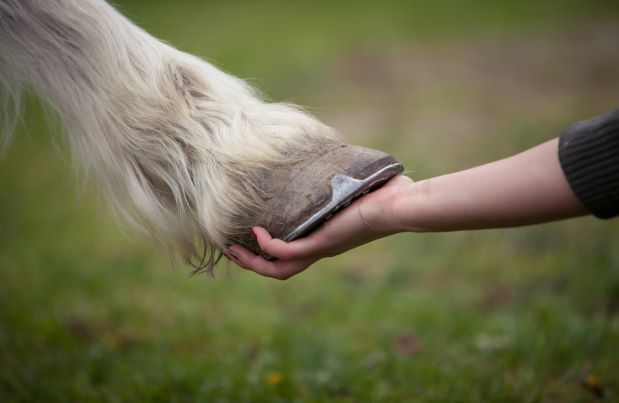This winter the grass has not really died back. This is leading to the real risk that a laminitic explosion will happen during the next few weeks. It is essential to ensure your horses and ponies lose weight to minimise the risk of laminitis.
In the winter months it is normal for grass to die back but this year this has not been the case. The signs of acute laminitis are well known to most horse owners but would you know the subtle signs of subclinical laminitis?
Sub-clinical laminitis signs:
- Preferring to walk on soft rather than hard ground
- Shortened strides, pottery in front
- Changes to hoof wall (rings that are uneven)
- Mild digital pulses are sometimes detected
- Can be lame when ridden but sound when there is no extra weight on their backs.
These animals struggle to lose weight, and seem to survive on nothing. Weight loss and monitoring the comfort of these horses is important. It is vital to reduce the amount of sugar these animals are consuming. Simple changes can be made to management to reduce intake.
Ways to reduce intake and help with weight loss:
- Ensure diet consists of high fibre and low sugar: This can be done in many ways.
- Swapping from haylage to hay.
- Soaking hay to remove the stored sugars in it (never soak Haylage).
- Ensuring the pony or horse has a full tummy before it goes out by feeding soaked speedibeet and a small net.
- Knowing how much forage and grass they are consuming. It amazes us that folk don’t know how much they are feeding their horse. If you want to ensure weight loss in an overweight animal, then it should consume no more than 1.5% of its bodyweight in a 24hr period.
- For example: 500Kg should consume no more than 7.5Kg of forage (grass and hay) in a 24 hour period.
- Talk to your vet, even if you have caught the subtle signs before you have a full blown episode of laminitis, it is crucial that you get pain-relief and suitable changes to the way you are managing your four legged friend ASAP.
Underlying causes of Laminitis:
Current veterinary research shows that both Cushings (PPID) and Equine Metabolic disease (EMS) are major factors in driving cases of laminitis. The number of both clinical and subclinical episodes an animal has and the severity of the lameness, play a large role in whether or not the horse will do well in the longer term. This is why it is vital to ensure that the subtle cases are caught quickly to give the horse the best chance in the longer term.
Treatment of laminitis:
Veterinary treatment and farriery has moved on dramatically in recent years. We now use different types of painkillers together, that work through different ways in the body. This helps to ensure the the animal is more comfortable. Shoeing for laminitic has also moved on with different ways of supporting the pedal bone within the foot and relieving the pain whilst ensuring stabilisation of the laminae, pedal bone and DDFT (deep digital flexor tendon) which all contribute to how much pain the horse or pony is in. It is vital that you the owner recognises the signs of laminitis even in the very early stages, that veterinary and farrier intervention is sought quickly and that both your farrier and vet team work together to help maximise the chances of recovery.

